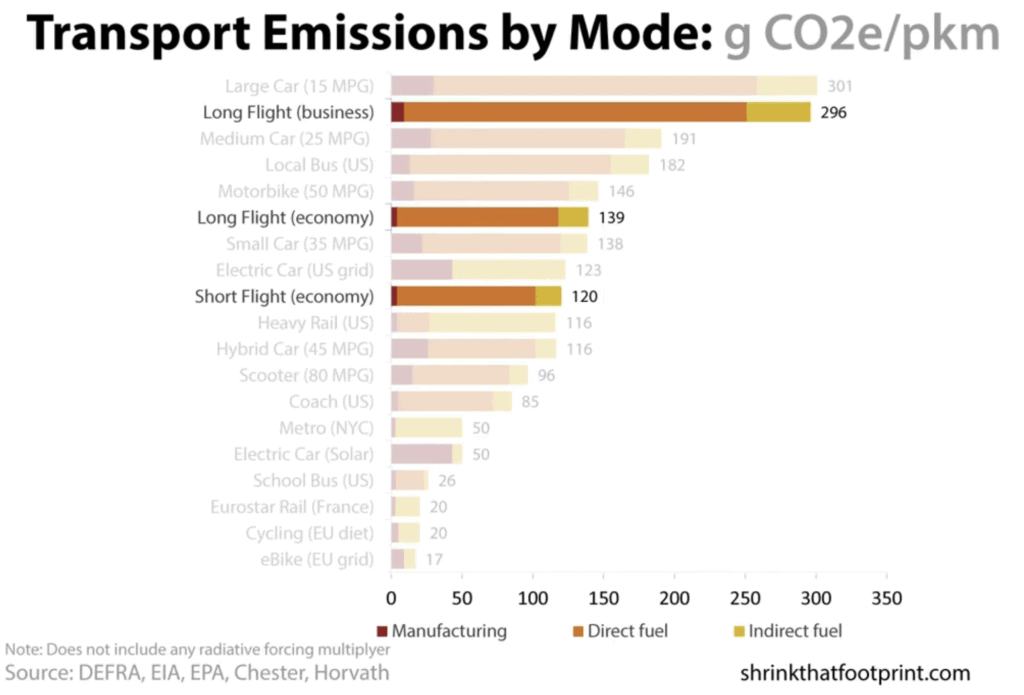
Flying is the fastest way to create a big footprint
Whereever possible it helps to avoid it. This post looks at the carbon problem with flying and one European holiday that is very low carbon.
Data shows long flights cost 296 g CO2 per km traveled
If you want to go on a climate-friendly holiday, it’s best to keep your feet on the ground. Today I’m going to talk about planning a flightless holiday. Avoiding flying wherever possible is certainly one of the most annoying parts of low carbon living, but it is what it is. In a minute, I’m going to do a little slideshow of a low carbon holiday that was so good I’ve been on it twice. But first up, just a little data to show you.

The problem with flying is that it’s one of the more carb-intensive ways to travel, as we can see in this graph. The real problem is that you can burn so much carbon in a hurry. Let’s say you fly to London from New York. That’s a distance of at least 5567 km (or 3459 miles). This is not counting connecting flights, or non optimal flight paths. Multiply that by the long flight carbon emissions of 296 g CO2 / km. The result is 1.5 tons of carbon emitted.
The average person emits 4-5 tons of carbon every year. A flight eats into 30-40% of that carbon budget within a day. For most of us, traveling is rare and thus thankfully we emit tons of carbon dioxide rarely.
To put that figure in perspective, 1.5 tons is a lifetime of cycling emissions, and a year’s worth of driving emissions. And in a weekend flying to New York and back from London, you can burn that.
Let’s say I’m going to the Pyrenees from London. Flying will cost me 282 kilograms of carbon per km. Driving will take me 139 per km, and by train just 35 per km. As you might have guessed from the data, I’ve been on a walking holiday in the Pyrenees a couple of times. And well, it was just a little bit magical.
Lindsay Wilson
I founded Shrink That Footprint in November 2012, after a long period of research. For many years I have calculated, studied and worked with carbon footprints, and Shrink That Footprint is that interest come to life.
I have an Economics degree from UCL, have previously worked as an energy efficiency analyst at BNEF and continue to work as a strategy consultant at Maneas. I have consulted to numerous clients in energy and finance, as well as the World Economic Forum.
When I’m not crunching carbon footprints you’ll often find me helping my two year old son tend to the tomatoes, salad and peppers growing in our upcycled greenhouse.
